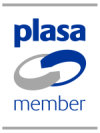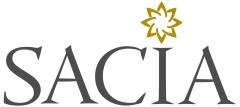22 February 2010
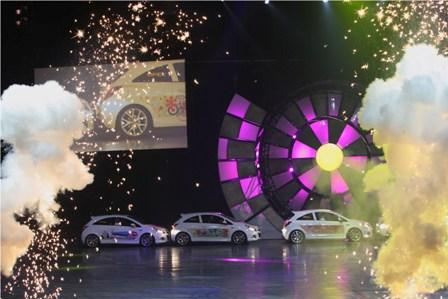
Story by Louise Stickland
For the fourth year running, Gearhouse South Africa supplied technical infrastructure to the Top Gear Live show, part of the 2009/2010 Top Gear Live World Tour on its recent visit to South Africa.
The event was staged in the Coca Cola Dome in Johannesburg and at the Grand Arena at Grand West, Cape Town, with Gearhouse working through technical production company Lucidity for Brand Events SA, the official licensee for Top Gear Live in South Africa.
Gearhouse project manager Michael Lewis worked closely with Lucidity’s Paul Newman, technical production manager, and the international Top Gear Live touring production team to ensure that sound, lighting, staging, rigging and 6000 seats (from Havaseat, also a Gearhouse company) were installed into the Dome to create the Top Gear Live arena.
This featured a hair-raising array of hot-rodded vehicular action and stunts presented by Jeremy Clarkson, Richard Hammond and James May, together with local DJ Sasha Martiningo from 5FM – all for the delectation of serious petrol heads, speed freaks and fast car addicts!
First, the Gearhouse Rigging team went into the Dome and installed 156 points, 85% of which were bridled to facilitate getting lighting, sound and AV equipment in exactly the right places. The total roof weight loading added up to 20.3 tonnes. This included all the production hung in the main Top Gear Live arena, which took up a large section of the Dome, plus a whole section of trussing and lighting that was supplied for the accompanying mezzanine and main exhibition areas. This figure also included a substantial trussing infrastructure built specifically for the draping and blacking out of the main arena from the rest of the venue.
The show fused a slick TV style presentation with rock ‘n’ roll spectacle in a high speed, high octane, high energy event, enjoyed by sold out audiences.
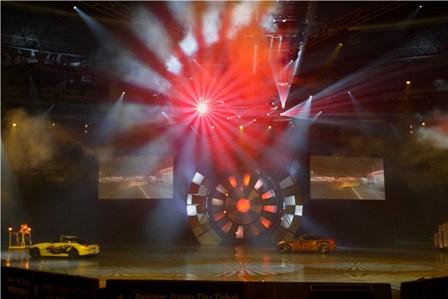 Lighting
Lighting
Live arena lighting was designed by Steve Sinclair from the international Top Gear Live team, who worked alongside a Gearhouse Lighting team of 15, with Gearhouse’s Sean Rosig as programmer and operator.
A star shaped truss design was flown above the arena, comprising a 6 metre ring and a 9 metre square truss with a diameter of approximately 12 metres with 9 ‘fingers’ coming off it. At the end of each finger was a vertically underhung 4 ft section of A-type trussing, with moving lights stacked on top of one another.
There were a total of 114 moving lights on the rig, a mix of Robe ColorWash 700E AT, ColorSpot 2500E ATs and Robe ROBIN 300E Wash fixtures. There were also 23 x Martin Mac 2000 Profiles, 16 x Martin Mac 250 Entour and 4 x Martin Atomic 3000 strobes.
Top Gear Live brought their own 8m high Loop-the-Loop which required 14 tons of ballast to keep it anchored. This was successfully manoeuvred into position by Top Gear’s famous anonymous stunt driver The Stig in his very own Stigmobile. Behind the Loop-the-Loop a 6 metre diameter vertically hung circular truss was rigged, and loaded with 16 Martin Professional MAC 250 Entours for backlighting the Perspex panels on the set which were erected directly behind the Loop–the-Loop.
The set was manufactured in Cape Town. It also included the ‘Cage of Death’, a steel mesh globe in which four mad stunt riders rode and screeched their motorbikes around simultaneously.
Show lighting was programmed and run by Rosig using a GrandMA full size console, with Steve Sinclair calling the cues and the 4 follow spots.
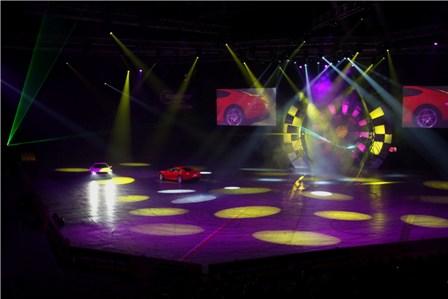 Sound
Sound
Audio was delivered via two main 8-element left and right V-DOSC arrays to cover the 2 seating stands which were at 90 degrees to each other, with a dv-DOSC hang in the middle for the VIP seats. L-Acoustics SB28 subs were hidden under the seats, in 3 separate clusters beneath each of the 2 stands, all time aligned to give a low end rumble of excitement and accentuate the “vrooom” of revving engines, all helping to ramp up the atmospherics.
For infill, 3 x L-Acoustics HiQs on “lollipop” stands were strapped to the sides of the seating stands. All of this was powered by LA8 amps and processed with Dolby Lake. The FOH mix was engineered by Gareth Davies from the international crew using a Yamaha M7CL console.
Mics supplied were a mix of DPA headsets and hand-held Shure SM58s all run off a Shure UP system with Workbench software, controlled by Gearhouse Audio’s unflappable Tom Gordon with Gearhouse’s Pierre Slabbert looking after FOH in Johannesburg.
For monitors, all Sennheiser G2 in-ears, there were 20 packs and 5 sends, all mixed from FOH – together with 2 backstage wedges.
Audio also supplied an extensive Clearcom comms package that was overseen by Gordon. This featured a 4-channel master station and primary show ring of 15 wired headsets, plus 3 wireless for the stage managers and curtain operators that were also connected to a radio interface to integrate 45 walkie-talkies. There were also 2 sub-rings running for cameras and follow spots.
With the show being called and run TV style, clean comms frequencies were a priority, and also quite a challenge to attain and maintain across the main arena and the exhibition areas.
In Cape Town, production utilised the grand West Arena’s in house JBL VerTec sound system, which was systems engineered by Nasser Mahmet with Tom Gordon ensuring the maximum continuity between the 2 sites.
AV
Two 8m x 4.5m IMAG screens were flown either side of the main set, fed by two pairs of overlaid Christie 16K projectors. Marcel Wijnberger from Gearhouse Media ran two Wings servers storing Top Gear Live content and VT inserts. Ambient content was controlled by Sean Rosig using a Catalyst supplied by Top Gear, all of which was fed into two Screen Pro II’s supplied by Gearhouse AV and operated by Craig McGinn. McGinn also received IMAG camera feeds which he output to screen.
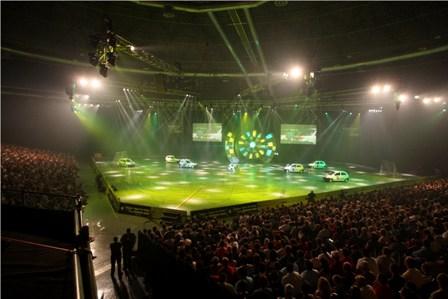 Seating
Seating
The two seating stands installed into the Dome – each containing 3000 raked seats – were positioned at 90 degrees to one another, forming a wedge shape between the stands, This space was not wasted and a stand was designed specifically to accommodate 100 VIP’s with 5 bars and pre show hospitality areas behind the seating which was finished in plush red velvet carpeting, At the back of the VIP section was the follow spot platform decked at 11m high.
The FOH mixer area was neatly tucked in to the front bottom edge of the seating stand, and everything was draped in black.
Says Michael Lewis, “It was a great pleasure to work with Paul and Lucidity and all the Top Gear Live international crew. Some great teamwork between all of us ensured that we got the show on, and dealt very effectively with any curve-balls that popped up as they inevitably do on a production of this scale”.


